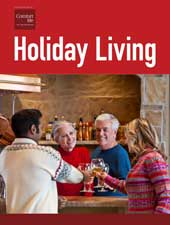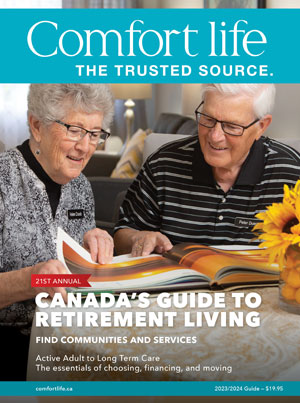Overweight boomers risk serious illness
Have you ever woken up earlier than your partner and listened as he slept? Or maybe you were watching TV and he dozed off? You may have noticed that he starts out breathing easily and then seems to stop completely for 10 or 15 seconds, snort himself almost awake and then start breathing again.
Sleep apnea
If this sounds like your loved one, he may have sleep apnea, a potentially serious condition that is more common in boomers—particularly men—who have become a little cuddlier over the years thanks to too many beers around the BBQ and too few runs around the park.
Many boomers take good care of themselves, exercising regularly and loading their plates with all manner of seeds, nuts and leaves. These are the ones we hear so much about—those whose fit bodies and endless energy makes them seem decades younger.
But there are many other sandwich generation boomers who are so overwhelmed by the multiple responsibilities of kids, jobs, exes, finances, houses and aging parents that throwing a sausage on the BBQ is as good as it gets.
And that’s where many are setting themselves up for trouble. Poor eating habits, coupled with lack of regular exercise, not enough sleep and too much, poorly managed stress has resulted in a large portion of overweight and even obese boomers.
Higher risk of arthritis
According to a study by Beth Israel Deaconess Medical Center (BIDMC), a teaching hospital of Harvard Medical School, there is more obesity-related arthritis among baby boomers than among their parents' generation (the so-called “silent generation” born between 1926 – 1945).
More boomers are obese now than their parents were at the same age and they’ve spent more of their lives that way than their parents’ generation did—even though they’ve had better access to food and nutrition.
Silent sandwich generation
You might think of these boomers as a strange composite of their generation and the one that preceded them—a kind of “silent sandwich generation,” because they are soldiering on, silently, at significant risk to their health.
Dangers of excess abdominal fat
Boomer women with a waist circumference over 35” and men with a measurement over 40” tend to have too much visceral fat (the fat covering their vital organs) which has been associated with higher risk of chronic conditions like diabetes and heart disease, some types of cancers such as colon, prostate and breast, and high blood cholesterol.
Buddy system for boomers
But there is always hope and changing your habits at 50 years of age will still give you several decades of improved health; if a 90 year old who starts lifting weights can build significant muscle strength, think what a motivated boomer could do? Maybe what we need is a national “buddy system for boomers” modeled on “Big Brothers” and “Big Sisters” in which the health conscious can influence their more sedentary counterparts.
High cost of illness in retirement
If overweight and obese boomers don’t make these changes, then their retirement years—during which many expect to keep working—will be anything but healthy and productive. And the often-preventable illnesses that result will eat up even more of their precious retirement income.
Nine health mistakes
Check out the nine health mistakes boomers make to see which ones are calling your name. And remember that even one move in a healthy direction—such as replacing one meal of sausages with chicken—really will make a difference.



